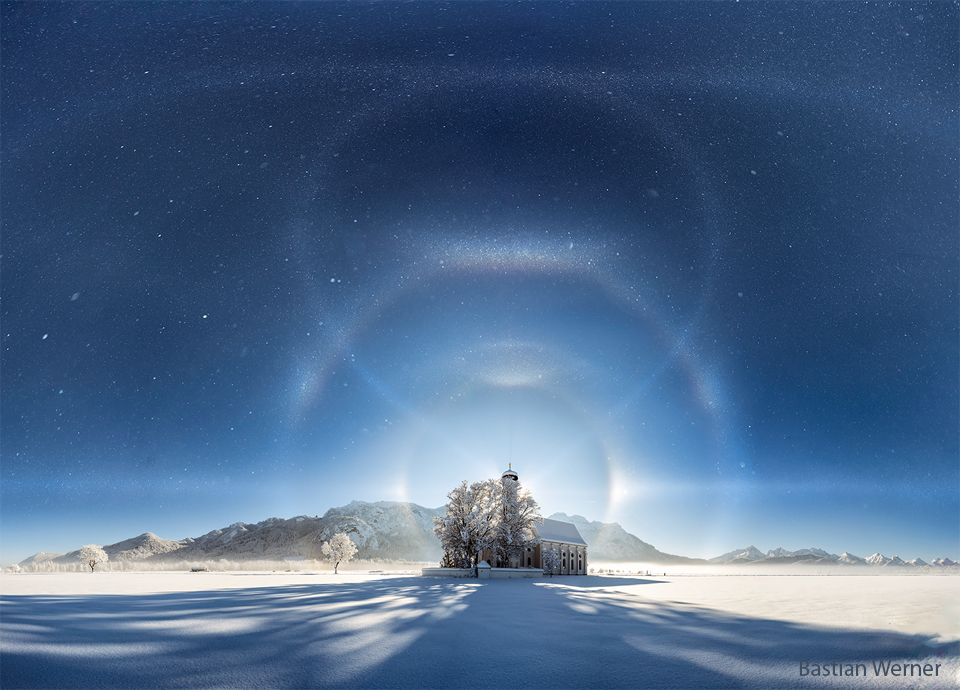2023年12月20日
Ice Halos over Bavaria
Image Credit & Copyright: Bastian Werner
Explanation: What’s causing those unusual sky arcs? Ice crystals. While crossing a field of fresh snow near Füssen, Bavaria, Germany, earlier this month, the photographer noticed that he had entered an ice fog. For suspended water to freeze into an ice fog requires quite cold temperatures, and indeed the air temperature on this day was measured at well below zero. The ice fog reflected light from the Sun setting behind St. Coleman Church. The result was one of the greatest spectacles the photographer has ever seen. First, the spots in the featured picture are not background stars but suspended ice and snow. Next, two prominent ice halos are visible: the 22-degree halo and the 46-degree halo. Multiple arcs are also visible, including, from top to bottom, antisolar (subsun), circumzenithal, Parry, tangent, and parhelic (horizontal). Finally, the balloon shaped curve connecting the top arc to the Sun is the rarest of all: it is the heliac arc, created by reflection from the sides of hexagonally shaped ice crystals suspended in a horizontal orientation.
Tomorrow’s picture: open space
巴伐利亚上空的冰晕
影像提供与版权: Bastian Werner
说明: 是什么造成了这些不寻常的天空光弧?冰晶。这个月稍早,摄影者在越过德国巴伐利亚州富森镇附近的一片新雪时,发现自己穿入了大团的冰雾里。悬浮的水要冻结成冰雾,温度要相当的低,而这天的气温确实远低于零度。这团冰雾反射了圣科尔曼教堂后方落日的余晖,并造就了摄影者所见过最壮观的景象之一。首先,这幅主题影像里的光斑不是背景恒星,而是悬浮的冰与雪。其次,影像中那两道最鲜明的冰晕,分别是22度晕及46度晕。此外,其他可见的多道光弧,从上到下依次为对日弧、环天顶弧、帕里弧、正切弧、和环水平弧。最后,连接顶部对日弧和太阳的气球状光弧最为罕见,它名为贯日弧,是阳光从水平悬浮六角形冰晶的侧面反射所形成的。 (antisolar/subsun arc 对日弧 日下弧; circumzenithal 环天顶弧; Parry 帕里弧; tangent 正切弧; Sun dog 幻日; horizontal/parhelic 环水平弧 幻日弧; heliac arc 贯日弧)
明日的图片: open space



